Happy New Year! While I’m in the midst of choosing an appropriate fabric for upholstering our future nursery rocker, I thought I’d share some of the things I’ve learned from selecting fabrics from past upholstery projects.
Last April, I had a pair of chintz chairs (a $25 FB MP find) reupholstered with this green fabric for our living room and I absolutely adore them.
Before
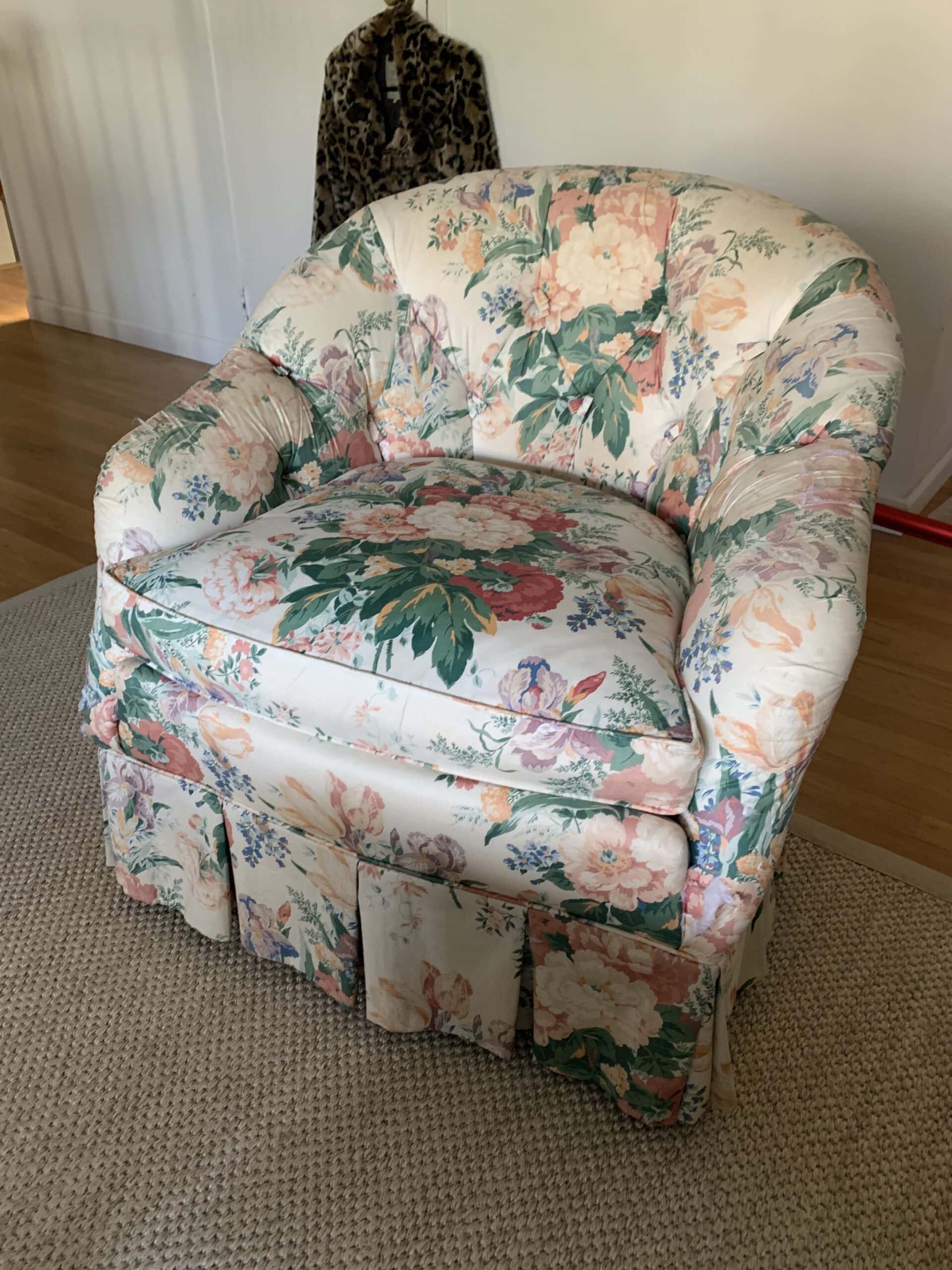
After

CHOOSE A FABRIC THAT’S MOST PRACTICAL FOR YOUR LIFESTYLE
You should factor in your family, pets, and how much you entertain. Performance fabrics are ideal for everyday use, and there are so many great performance fabrics on the market. Most fabrics usually make it clear that they’re a performance fabric, so you don’t have to guess.
Consider how a fabric may age over time. Check the label and ask the manufacturer questions to determine the cleaning needs, then think about how much maintenance you’re prepared to do to protect your fabric.
Ask yourself the following:
- How will it look in five years?
- Will you still love the fabric or leather as it develops a patina from everyday use?
- Will you vacuum the upholstery fabric regularly?
- Will you know how to properly clean if it gets stained?
- Will you close the drapes when the room is not in use to avoid some of the fading that naturally occurs from exposure to sunlight (in some fabrics)? Or does that not bother you?
If you have pets, children, or a messy spouse, maybe consider a faux suede or the durability of an indoor-outdoor fabric, and stay away from delicate or textured options, like silk, which is not easy to clean.
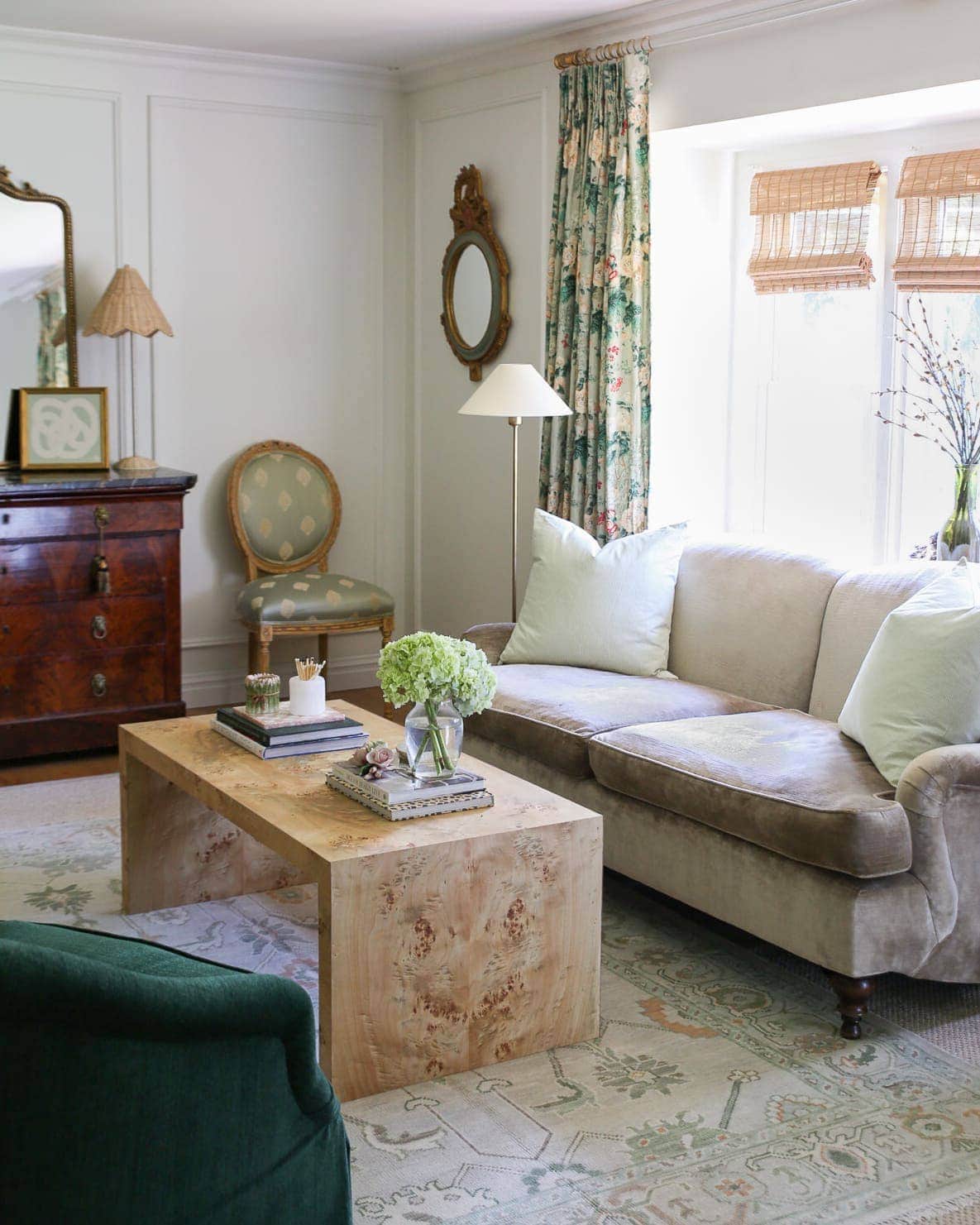
PAY ATTENTION TO DOUBLE RUBS
Double rubs = abrasion resistance.
In other words, how durable is the fabric, and will it hold up to the wear and tear of everyday use?
The Wyzenbeek and Martindale tests are the methods that fabric manufacturers use to predict wear-ability. The methods are performed using a machine to test for abrasion and usually, the number of rubs is measured by one back and forth motion over the fabric. 3,000 double rubs are estimated to be one year’s use.
A fabric is labeled heavy-duty if it can withstand 15,000+ double rubs, so I’d look for a fabric with at least that.
For reference:
- Light duty – 3,000-9,000 double rubs. This type of fabric is suitable for use in pillows, drapes and curtains
- Medium duty – 9,000-15,000 double rubs. This type of fabric is more versatile and can be used on different daily-use furniture
- Heavy-duty – 15,000+ double rubs. Suitable for the couch in the living room
- Anything above 15,000 double rubs is for commercial use, like a doctor’s office waiting room.
PUT YOUR FABRIC SWATCHES TO THE TEST
Depending on what you’re reupholstering (chair, sofa, headboard), who lives in your household, and where this fabric will be used, you should definitely stain test the fabric swatches, and use the fabric’s accompanying cleaning code to try and get the stain out.

Our headboard had a small, barely noticeable stain on it when I purchase it secondhand, and the previous owner told me she tried everything to get it out. I didn’t bother using my own method because I didn’t want to ruin the fabric. But I definitely wouldn’t feel comfortable recovering something like chairs in this fabric when it’s so hard to clean!
Here are some ways you test your fabric swatches (again, make sure you read the swatches cleaning code for recommended cleaning method):
- Spill coffee (with and without milk)
- Spill white and red wine
- Spill milk
- Spill ketchup
- If you have small children, use markers or whatever else children use to destroy valuable things on fabric
- If you have a cat, use a fine needle or tool to replicate cat scratches
If you’re looking for a heavy-duty performance fabric, consider Crypton or an indoor-outdoor fabric like Sunbrella.
My favorite fabric and carpet cleaner is Folex, and I’ve found it works on most fabrics.
CONSIDER THE SHAPE OF THE FURNITURE YOU’RE REUPHOLSTERING
Depending on construction of your furniture, you *may* be able to alter the profile slightly.
For example, I wanted the tufted backs of my chintz chairs to be removed for a more modern look.
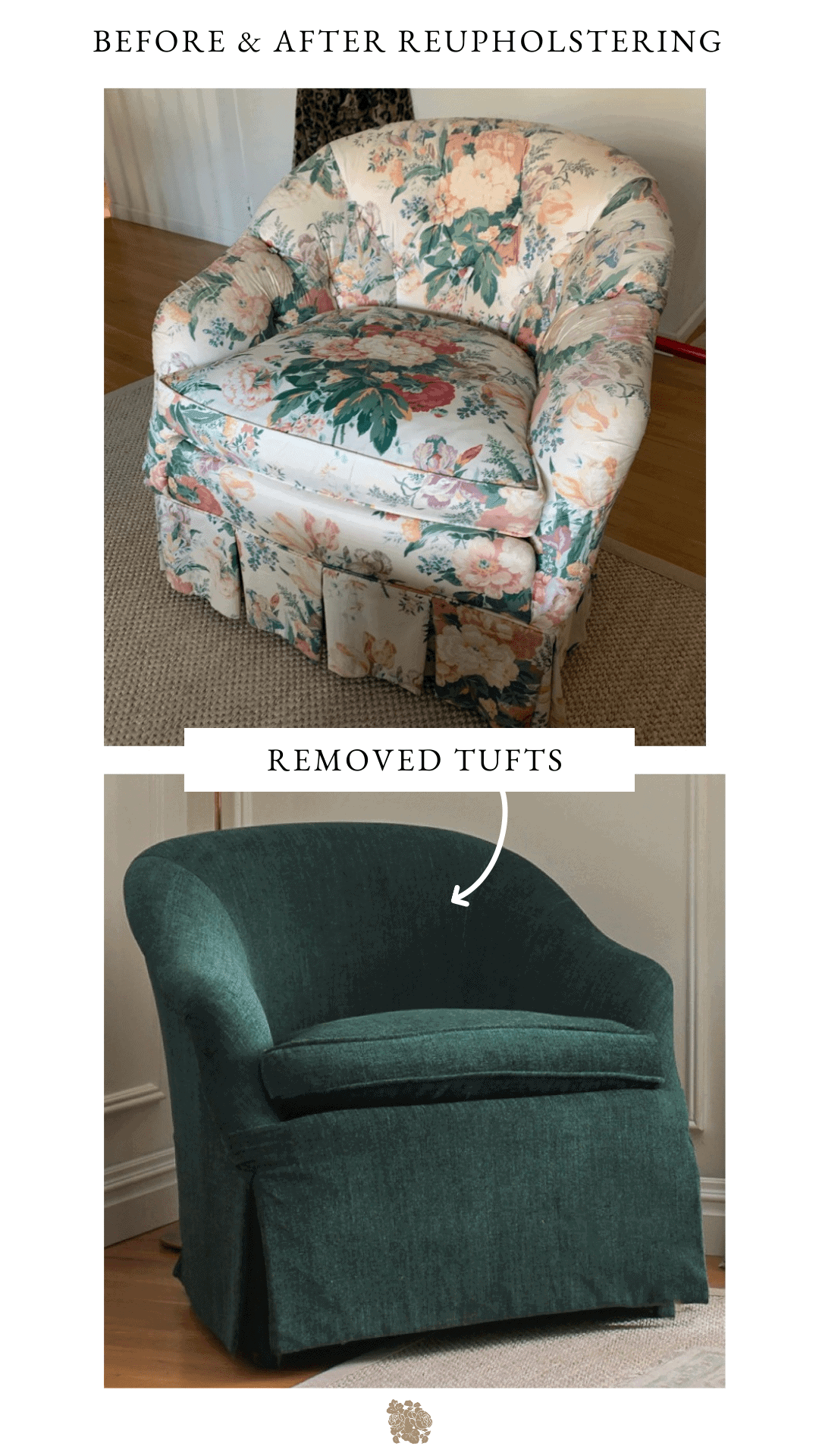
Consult with your upholsterer to see what can be altered on your furniture.
If you’re upholstering a more curvy piece, maybe stick to solid colors over patterns, because certain patterns may not work well. A pattern that looks good on a fabric sample may not look good once it’s covering more surface area on your sofa.
Also, consider the size of your furniture. For sofas, a solid neutral may be best so you don’t get tired of it over time, and consider a bolder color or pattern for a chair.
HOW MANY YARDS OF FABRIC WILL YOU NEED?
Here’s a helpful chart I’ve used in the past whenever I’m considering reupholstering anything:
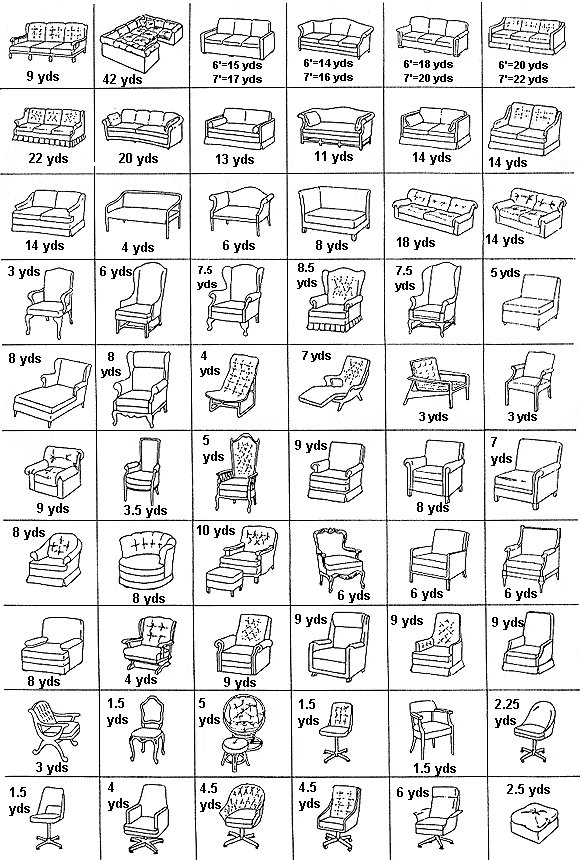
Not sure where to buy fabric? Check out this post!
Also, here’s a post that covers everything you need to know about buying secondhand upholstered furniture.
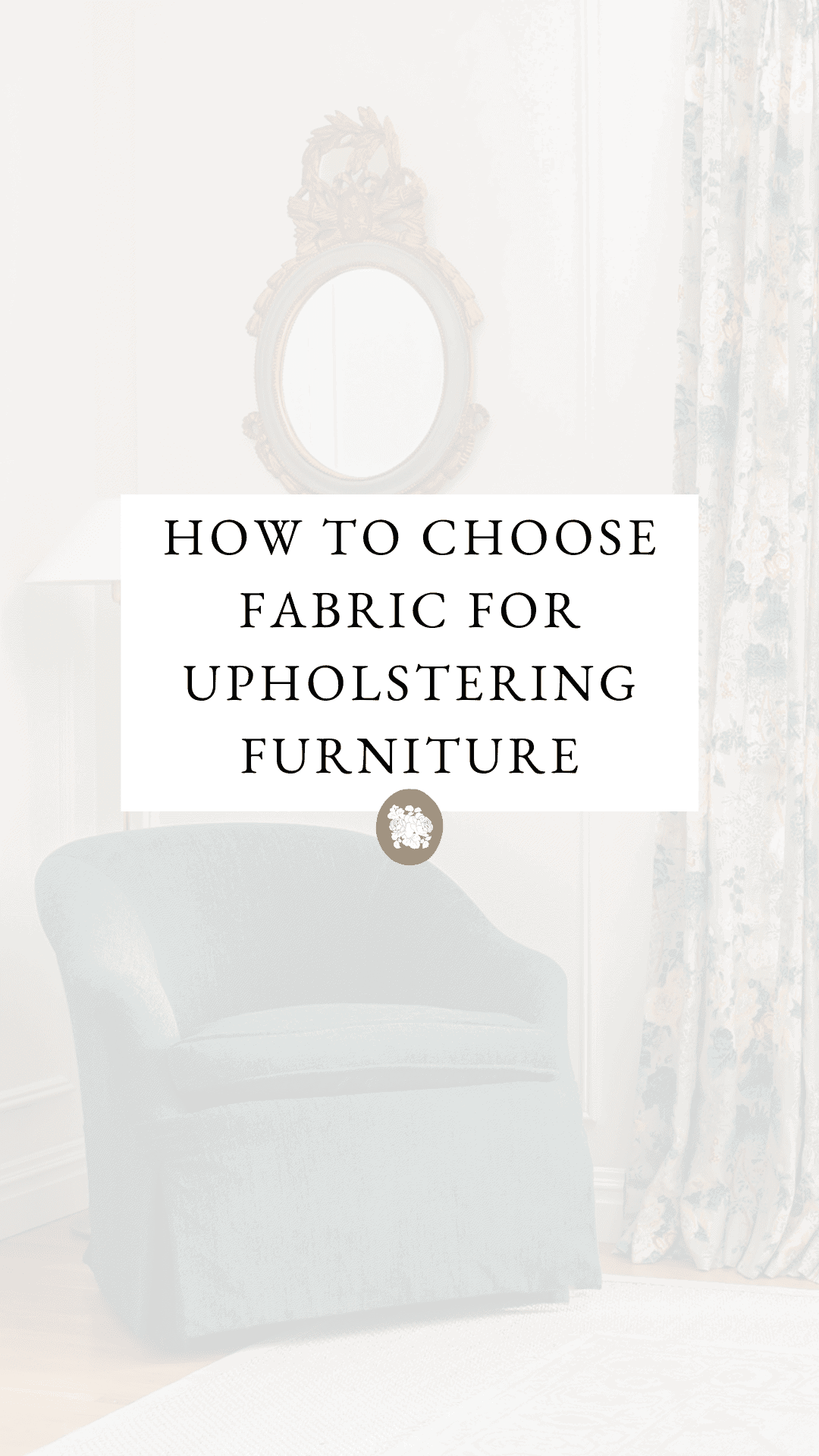



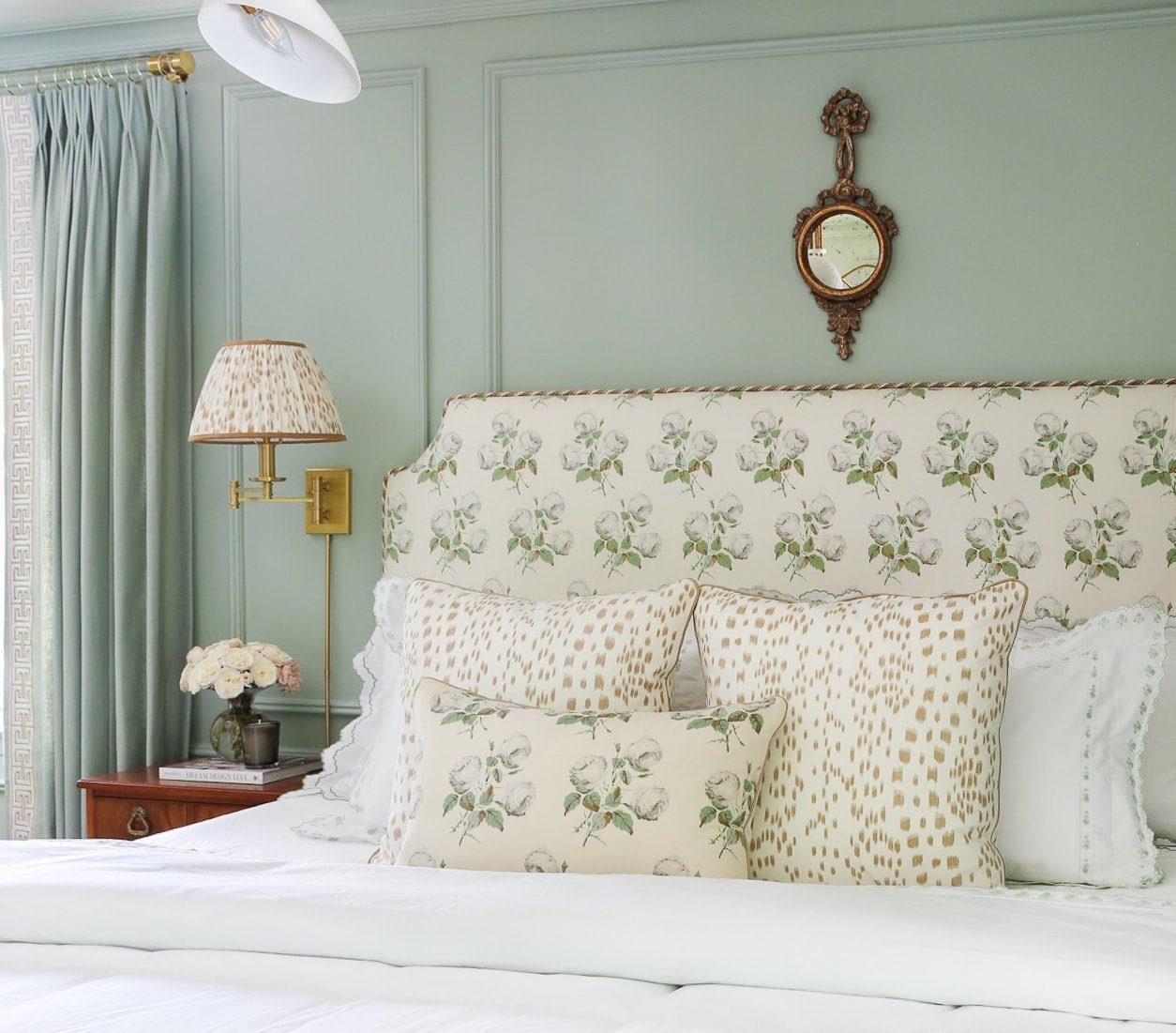
Thank you for the yardage chart, that will certainly come in handy.
Thrilled about your wonderful baby Bovino news!
Best to you